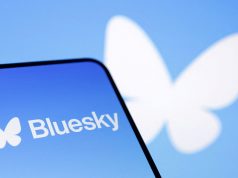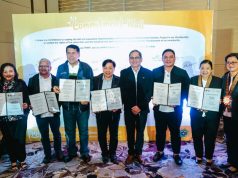Twitter provided suggestions on how students and educators could utilize the platform for their educational needs as they adapt to the blended or distance learning approach in the Philippines.
The blended or distance learning is a mixture of online and offline modes of teaching for students imposed by the Department of Education and the Commission of Higher Education as an alternative to the face-to-face classes.
Twitter offered four tips on how they could use the social media network as an educational tool both for students and teachers.
1. Use Topics to see education-related tweets
Twitter cites how its users have are free to discuss topics in various fields there such as news and current affairs, language, biology, art and other interests and hobbies.
“To get education-related Tweets on your timeline, use the Topics that allows you to see the Tweets without completely following an account,” it suggested.
#TodayinHistory in 1950, 70 years ago, the 10th Battalion Combat Team (BCT), the 1st of the 5 #PH contingents that formed the Philippine Expeditionary Forces to Korea (#PEFTOK), landed in Busan, South Korea. (THREAD) #History #Kasaysayan #Philippines #KoreanWar pic.twitter.com/YaU9F5Yy09
— Kristoffer Pasion (@indiohistorian) September 19, 2020
2. Tweet to draw tips and insights from communities
Twitter suggested following certain hashtags such as #ScienceChatPH and #studytwtph to connect and interact with their fellow students and teachers online.
“It’s understandable that adjusting to new normal learning is a learning process itself. Hence, it is important to surround yourself (online) with a community that shares information and encouragement on how to support distance learning at home,” Twitter said.
tips to stop/lessen procrastinating
[a thread]#studytwtresources #studytwt #studytwtph pic.twitter.com/sy5DUWWkSC
— lexa (@lexaiskolar) September 28, 2020
To limit or moderate the sharing of ideas, Twitter suggested using its feature where users can choose who can reply to their tweets.
There are three options on who can reply to your tweets:
- Everyone – For public accounts, it means that everyone will continue to be able to reply. If your Tweets are protected, it means only people who follow you will continue to be able to reply.
- People you follow – Only people who you follow, as well as anyone you mention in the Tweet, will be able to reply.
- Only people you mention – Only people who you mention in the Tweet will be able to reply.
3. Follow and organize education/learning accounts.
Twitter also promotes the platform’s use as a news bulletin for real-time information on the latest updates related to education in the Philippines.
Students and teachers are also encouraged to enable their notifications when they follow these accounts or use the List feature to streamline their timeline based on their needs.
“Teachers and parents can keep track of the school calendar and other information by following authoritative sources like the Department of Education (@DepEd_PH) who regularly post updates on their respective Twitter account,” Twitter said.
INTERNATIONAL LITERACY DAY 2020 📖✏️
Alam mo bang maaari mong mapaunlad ang literasiya ng mga kasama mong bata kahit nasa bahay lang?
Narito ang mga simple ngunit masayang pamamaraan upang matuto ang mga bata kahit nasa loob lamang sila ng tahanan. (1/2) pic.twitter.com/IFn0O7utIV
— DepEd (@DepEd_PH) September 8, 2020
4. Learn from interactive content
Twitter also hosts interactive educational content such as video series and infographic trivia.
It cited the accounts from the National Historical Commission of the Philippines and EduCreator Peter Esperanza.
“Twitter can be both for entertainment and education, just remember to safeguard your account and foster meaningful conversations online for a nurturing learning experience,” it said.
To all of us who are starting our migration from LIVE to REMOTE INSTRUCTION. Here are some of the #MathInAMinute lessons for you:#remotelearning #remoteinstruction #onlinelearning #distancelearning @AppleEDU #AppleEDUchat
Prime Factors and Factor Tree https://t.co/J2kI47GzXs pic.twitter.com/yzIUZLSpJi
— Peter Esperanza, EdD (@pedroj0se) March 23, 2020
#TodayinHistory in 1898, Apolinario Mabini wrote a letter to Domingo Colmenar, private secretary. Attached on the letter is a decree on the rules for Cabinet Secs in handling their respective jurisdictions. Aguinaldo's 1st Cabinet headed by Mabini met 2x per wk. #MakeItHistoric pic.twitter.com/SVcf5v9Ot2
— National Historical Commission of the Philippines (@NHCPOfficial) September 16, 2020










